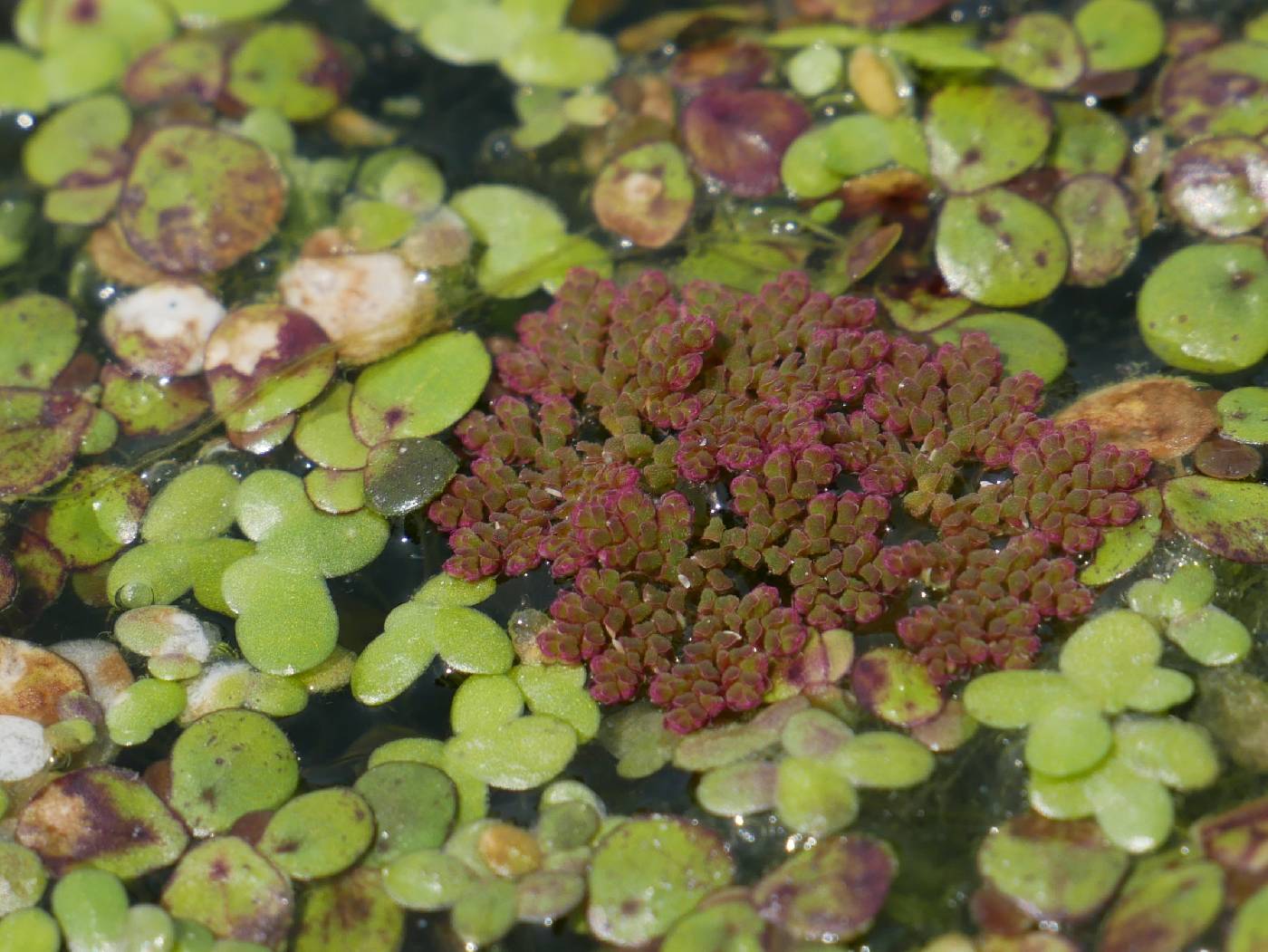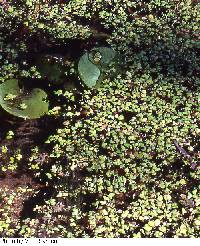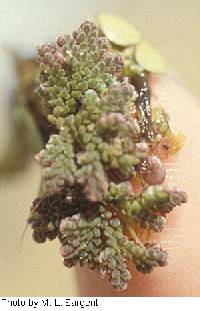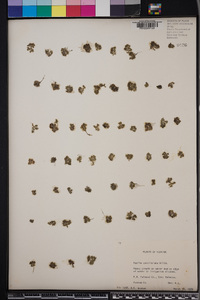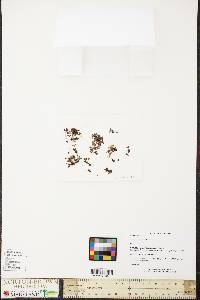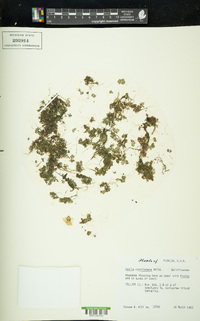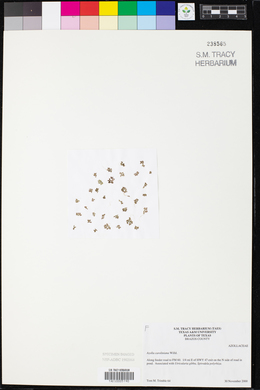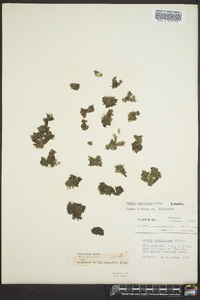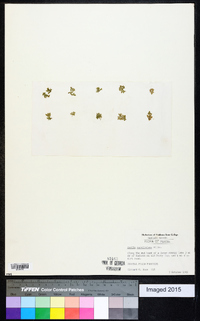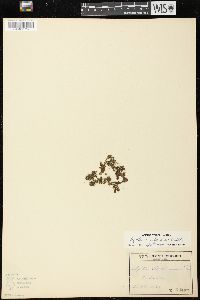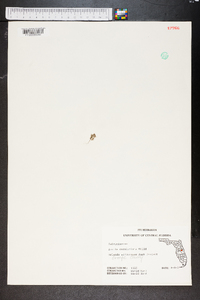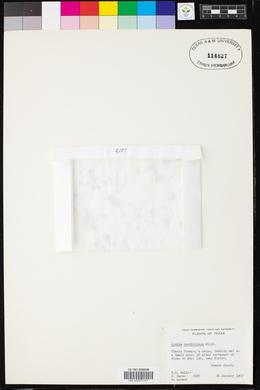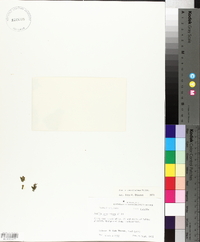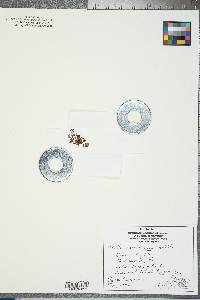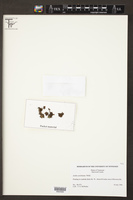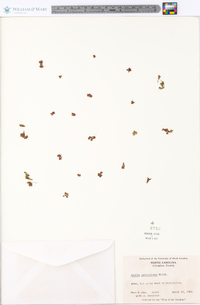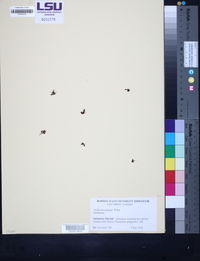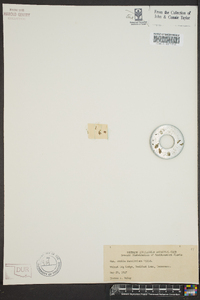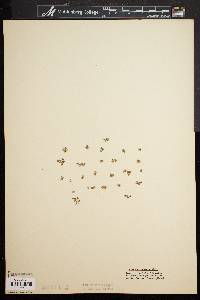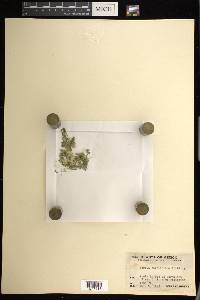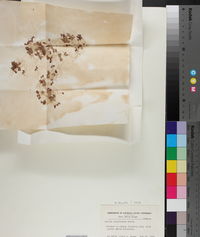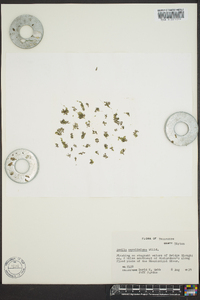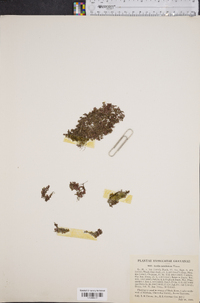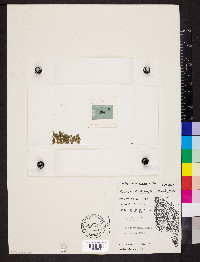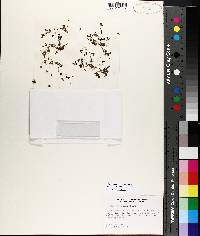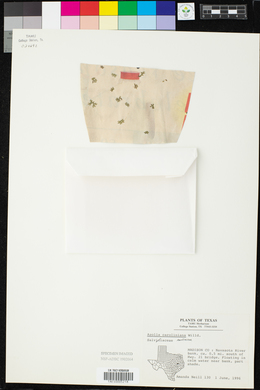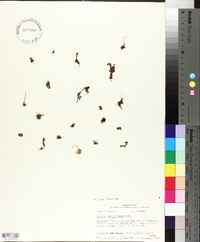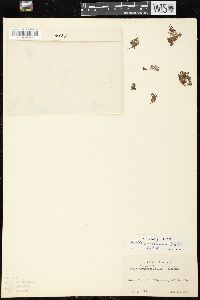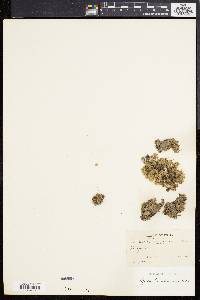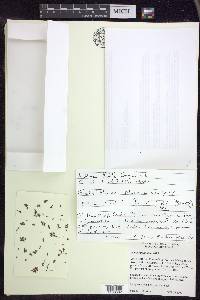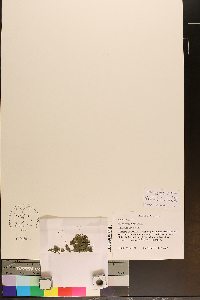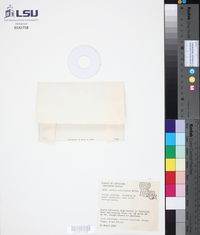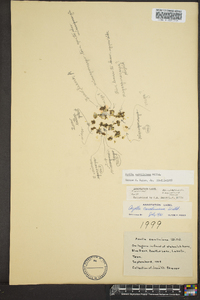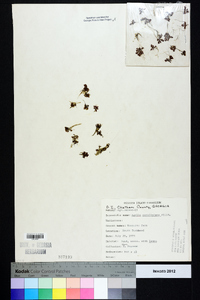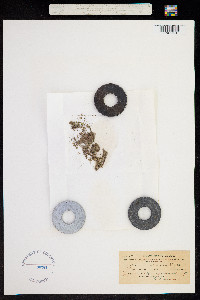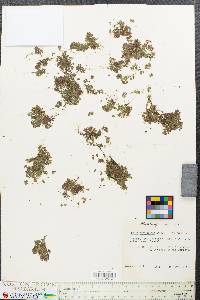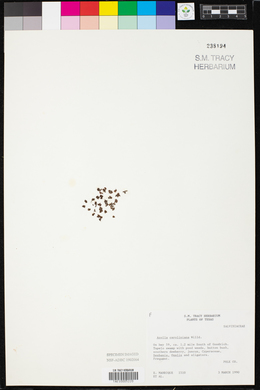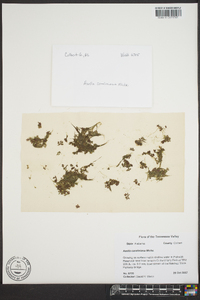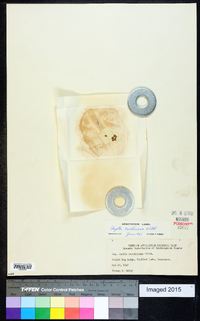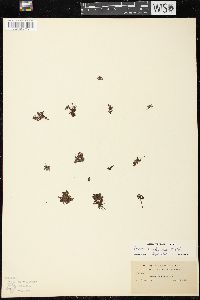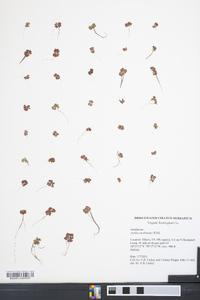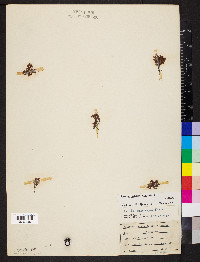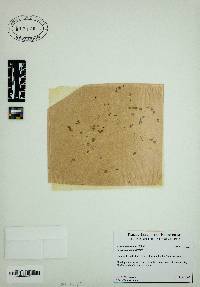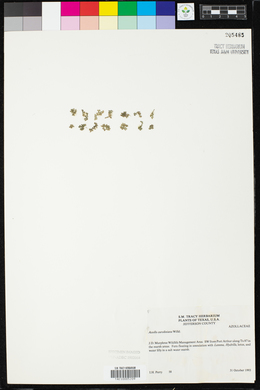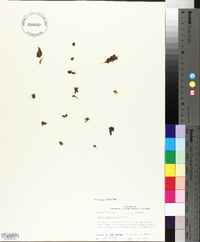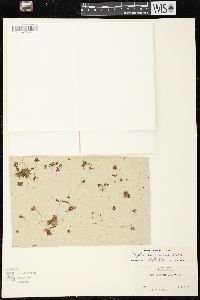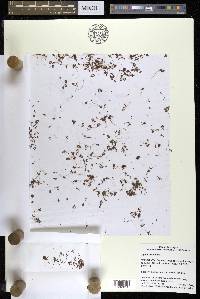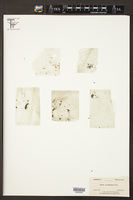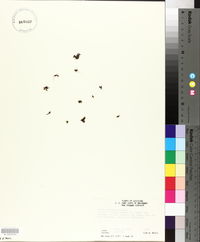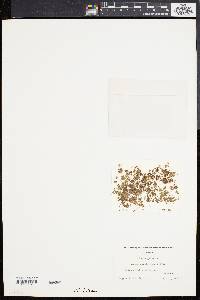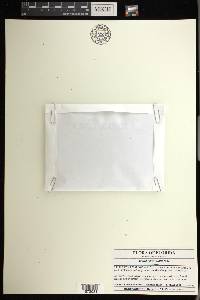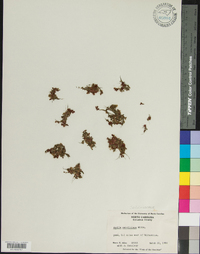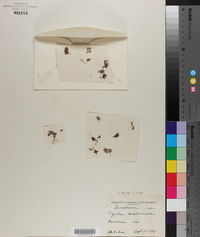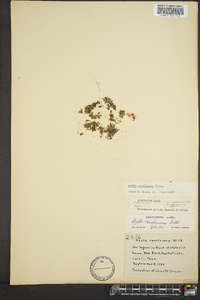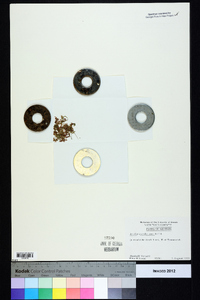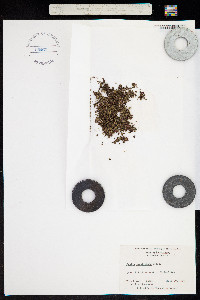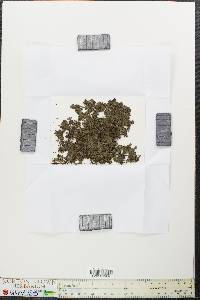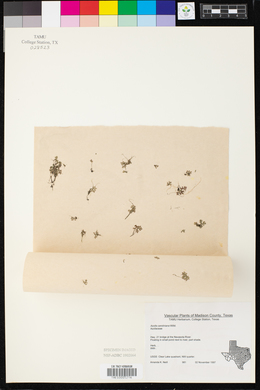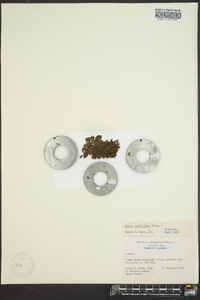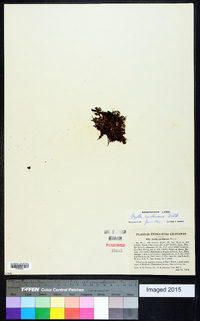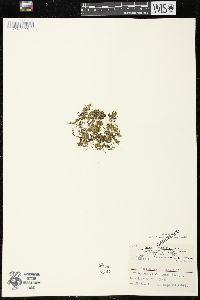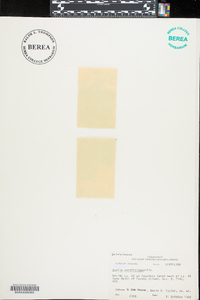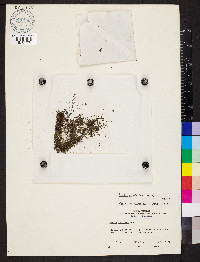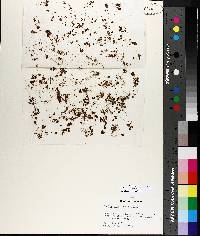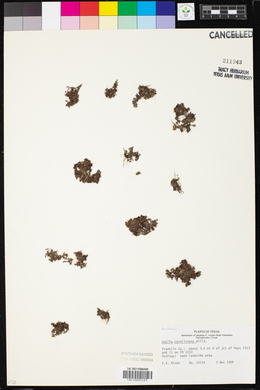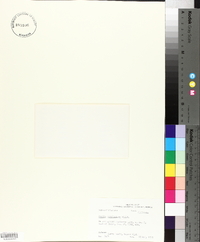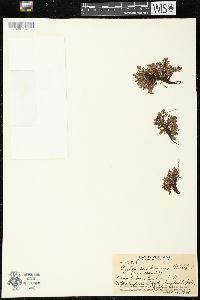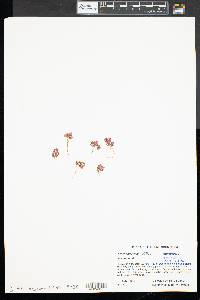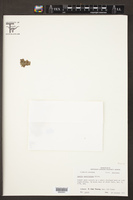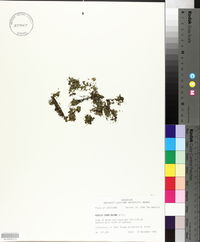Azolla caroliniana
|
|
|
|
Family: Salviniaceae
Carolina mosquitofern
|
Plants dark green or with margins of bright crimson or whole plants dark red, free-floating or forming multilayer mat to 4 cm thick under good conditions; plants infrequently fertile. Stems prostrate, 0.5--1 cm. Largest hairs on upper leaf lobe near stem with 2 or more cells; broad pedicel cell often 1/2 or more height of hair, apical cell curved, with tip nearly parallel to leaf surface. Megaspores without raised angular bumps or pits, densely and uniformly covered with tangled filaments. The sporophyte of Azolla caroliniana commonly survives throughout the year in temperate areas (with hard frosts and prolonged ice cover). It is the best adapted of all species for subsistence on mud. Azolla caroliniana is rarely collected with sporocarps.
Aquatic herb, free-floating or forming a mat to 4 cm thick usually 5 - 10 mm across Stem: prostrate, 0.5 - 1 cm long, hairless. Leaves: alternate, stalkless, dark green (sometimes with red margins) or dark red, two-lobed. The upper (emersed) lobe is several cells thick with a hairy upper surface, the largest hairs near stem having two or more cells. Lower (immersed) lobe one cell thick except near base, a little larger than the upper lobe, cup-shaped. Roots: 3 - 5 cm long, unbranched. Fruit cases: (sporocarps) paired, borne at base of lateral branches, either containing male spores (microsporocarp) or female spores (megasporocarp). Plants are often infertile, lacking sporocarps. Female cases: (megasporocarps) each bearing one functional female spore (megaspore) 0.2 - 0.6 mm across, covered with dense tangled hairs, having three floats covered by a dark cone-like flap (indusium), lacking raised angular bumps or pits. Male cases: (microsporocarps) each bearing many male spores (microspores) 3 micrometers across, covered with arrow-like barbs. Similar species: Azolla mexicana differs by having pitted megaspores that are sparsely covered with a few long, slender hairs. However, a scanning electron microscope is required to see the megaspore surface, and many herbarium specimens completely lack megaspores. Therefore, many specimens cannot reliably be determined as one species or the other. Additionally, many taxonomists previously identified specimens based on the number of cross-walls in the barbs of microsporangial masses and on the general width of the plant, both being unreliable characteristics. Based on the expected distributions, the Chicago Region specimens are most likely A. caroliniana. See the Flora of North America link below for further detail on the taxonomic issues within this genus. Habitat and ecology: Occasionally floating in stagnant or slow-moving waters. Occurence in the Chicago region: native Notes: Azolla species have a symbiotic relationship with Anabaena azollae, a blue-green algae which fixes atmospheric nitrogen. Anabaena azollae grows in stem tips, beneath the indusium, and in upper leaf lobe cavities. Therefore, some species of Azolla are harvested and used as fertilizers or nutritional supplements in livestock feed. Etymology: Azolla comes from the Greek words azo, meaning "to dry," and ollya, meaning "to kill," referring to death caused from lack of water. Caroliniana means "from the Carolinas." Author: The Morton Arboretum Plants rarely fruiting, minute, mostly 5-10 mm wide, dichotomously branched almost throughout; upper lf-lobes 0.5-0.6 mm, much smaller than the lower, not much imbricate; massulae ca 0.3 mm, the glochidia without cross-walls; megaspores unknown in U.S.; 2n=48. floating in still water; Mass. and N.Y. to Fla. and La. on the coastal plain, and up the Mississippi embayment to w. Ky. and (?) s. Ill.; W. Ind. Rare. Gleason, Henry A. & Cronquist, Arthur J. 1991. Manual of vascular plants of northeastern United States and adjacent Canada. lxxv + 910 pp. ©The New York Botanical Garden. All rights reserved. Used by permission. |

